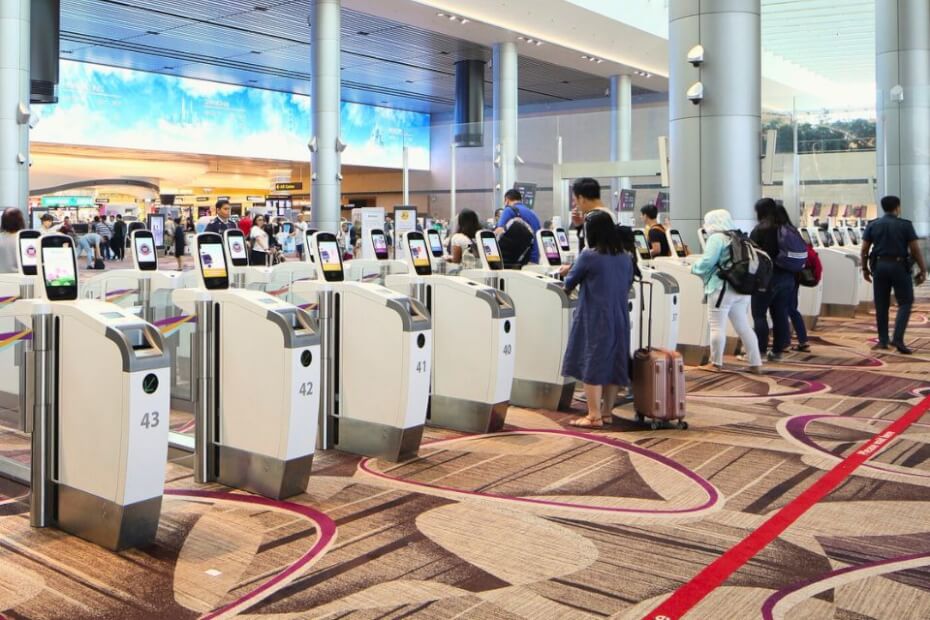
Singapore will be the first country in the world to allow all foreign visitors to use automated immigration lanes at all checkpoints in Changi Airport.
In February 2024, Singapore’s Immigration and Checkpoints Authority (ICA) announced it would allow all arrivals to use its new Automated Border Control System (ABCS).
By the second half of the year, all foreigners visiting Singapore will be able to scan their passports using the new automated immigration lanes.
Additionally, foreign travelers will be able to use the new automated lanes without having to register beforehand.
Upon leaving Singapore, travelers must undergo biometric assessments but will not need to present their passports again.
Currently, only Singapore residents and foreign visitors from 60 jurisdictions can use the automated turnstiles to enter the country.
This is a significant increase from 2022, when it was first introduced. Back then, travelers from only 16 territories could use them.
Seamless immigration checks for increasing travelers
The ABCS is part of the ICA’s New Clearance Concept. It aims to provide a faster, more seamless, and more secure immigration clearance experience for all travelers.
The new automated immigration lanes use multi-modal biometrics clearance systems to identify travelers more efficiently.
Apart from using iris and facial scans, the new automated turnstiles use fingerprint scans to authenticate travelers’ identities.
It is also possible for travelers in wheelchairs and family groups of up to four persons to use automated immigration lanes at select checkpoints.
The ABCS will slowly replace the existing lanes and manned counters at all checkpoints to cater to the increasing number of travelers.
In 2023, the ICA installed more than 160 additional automated lanes. It will add 230 more automated lanes this year.
According to the ICA, Singapore received 193 million visitors in 2023. This marks an 84 percent increase from the previous year.
The 2022 figure is still slightly lower than in 2019, when the Lion City received 217 million travelers before the coronavirus pandemic.
Contactless travel and enhanced security
More airports worldwide are implementing automated immigration lanes using biometric technology for a faster and more efficient travel experience.
Biometric technology is now utilized in Frankfurt Airport in Germany, Dubai Airport in the United Arab Emirates (UAE), and major airports in Australia.
The United Kingdom (UK) also plans to implement facial recognition technology for a faster, more seamless immigration experience.
During the Airlines 2023 conference, UK Border Force Director General Phil Douglas revealed that the agency was looking to procure next-generation electronic passport gates or eGates.
The UK’s current eGates only scans the passport photo and information page and then takes a new picture of its holder to check if they match.
Initially, the eGates were only for British and European Union (EU) nationals. Now, these are available to travelers from Canada, Iceland, Japan, New Zealand, the United States, Australia, and other countries.
Using next-generation eGates with facial recognition technology, travelers will no longer need to present their passports to clear immigration.
The UK Border Force agency is set to conduct trials of the new eGates at British airports later in the year.
If the trials are successful, over 270 eGates at 15 UK airports and rail stations will need to be replaced.
ETA supports seamless travel experience
With automated immigration lanes that use facial recognition technology, Douglas expects travel paper documents such as visas and passports to become obsolete.
Without physical travel documents, long queues and passport desks will also be a thing of the past, especially with the UK’s new Electronic Travel Authorization (ETA) system.
“ETAs are very important,” Douglas shared, adding that immigration control operations in the UK will change significantly.
The UK’s new digital travel permit system, which is required for travelers who do not need a visa to visit the UK, will help them decide on entry permissions in advance.
Douglas explained, “We will be able to identify and target them more accurately because we will have more information about them upfront.”
With the ETA, officials will know if travelers have already been to the UK if they have complied with immigration laws, and if they have any record in the security database system.
The ETA will also streamline immigration checks for pre-screened, low-risk individuals with a good immigration history.
Digitizing the UK border
Along with the new UK ETA system, the British government is also working towards a “digital by default” border to improve security.
The UK Home Office is already transitioning all physical immigration statuses to a digital record or eVisa. Starting 1 January 2025, it will only issue eVisas.
Additionally, passport and UK visa applications already collect biometric information.
All the data collected will give the government more control and oversight over individuals entering the country.

